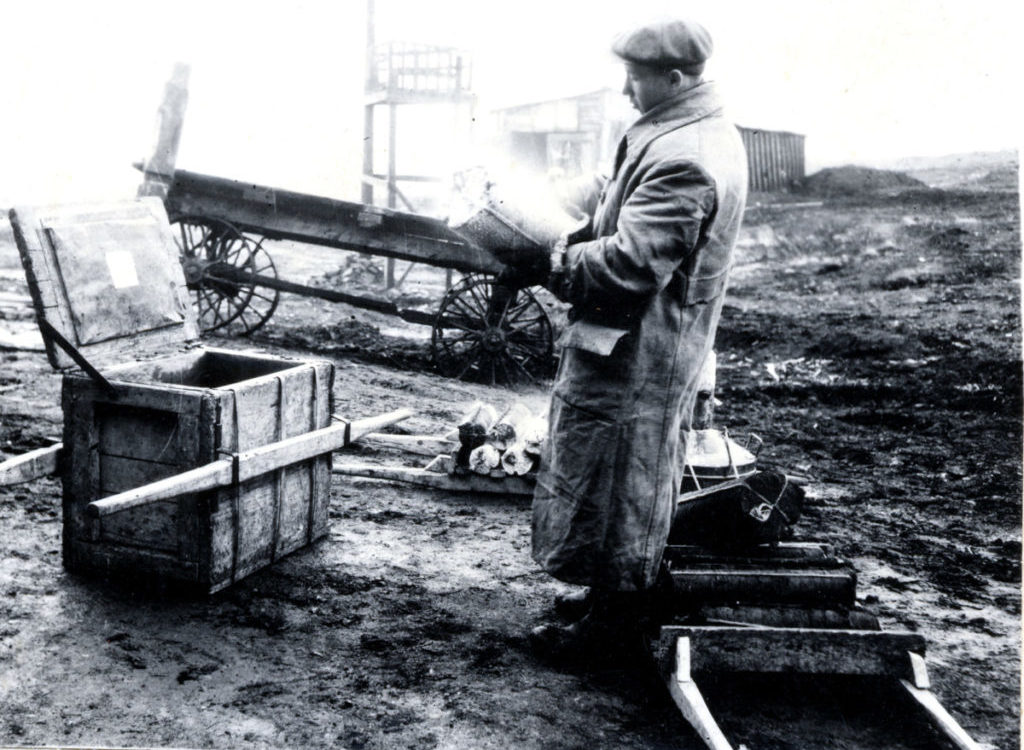#ARCTIC. #SIBERIA. THIS IS TAIMYR. One of the authors (with Aleksey Bondarev) of the first book about Norilsk remained Sergey Shcheglov-Norilskiy for life.
A freshman of the history faculty of the Moscow Regional Pedagogical Institute was sentenced to five years for anti-Soviet agitation and was brought to the camp village of Norilsk in August 1942. The prisoner of Norillag, like everyone else, began with general work. A former student hacked the ground at construction sites, until the exhausted young man was transferred to an oxyliquite laboratory. The employees of that laboratory, who received the Stalin Prize for the development and use of oxyliquite (local explosives) in open pit mines, during the perestroika era became the heroes of Sergey Norilskiy’s main book entitled The Stalin Prize.
Shcheglov-Norilskiy considered himself a participant in the construction of not only the oxyliquite plant, but also the big concentration plant, as he laid the oxyliquite cartridges during the construction of the foundations. Since 1942, a Norilsk resident could assess the role of the Small and Big metallurgical plants, combined heat and power plants, and BCP in the country’s victory in the Great Patriotic War. He called the Nickel plant (the oxyliquite plant became one of its shops in the 1950s) his home.
The Oksiliquite plant was launched in June 1943, and, as a result, the builders, laboratory staff from prisoners received a reduction in terms. After his release in March 1946, 25-year-old Sergey Shcheglov continued working in the laboratory and even graduated from the All-Union Correspondence Polytechnic Institute.
In total, the future head of the laboratory devoted fifteen years to oxyliquites. At the same time, a certified chemical engineer was engaged in journalistic and literary work, even became a member of the the USSR Journalists Union after his rehabilitation in 1959. His energy was enough both to refine the ore mining technology using oxyliquite, and to chair the local literary association.
The Norilsk Museum carefully preserves not only the rich literary heritage of the famous writer, journalist, historian, literary critic and human rights activist, but also the local explosives creation history in documents and photographs.
In the 1980s, Sergey Shcheglov handed over to Norilsk the handwritten and typewritten texts of research works up to the final, 1948, Oxyliquites in Open Pit Mines signed by the plant head Vladimir Zverev, his deputy for mining Ignatiy Usevich and the head of the plant Yury Zinyuk.
Neither Zinyuk, nor the plant technician Mark Kantor, nor the head of the laboratory, Sergey Shcheglov, were on the list of laureates of the 1950 Stalin Prize for an explosive developed and tested at the cost of human lives. Those and dozens of other scientists involved in the experiments, remained only in the memory of contemporaries and on the pages of Shcheglov-Norilskiy’s Stalin Prize. This book of stories became central to the writer’s literary biography.
Sergey Shcheglov began to study journalism and then literature professionally in Tula, where in 1961 he moved with his family. He wrote for newspapers, magazines, including Norilsk ones. The heroes of his publications and books were often legendary Norilsk residents: Nikolay Urvantsev, Nikolay Fedorovsky, Nikolay Kozyrev and others.
In Tula, Shcheglov was running the affairs of the Memorial organization he created for over a quarter of a century. Thanks to the first leader of the society, the monument to the victims of political repression appeared in the hero-city, and several volumes of the Memory Book of the Tula Region were published.
All those years Sergey Shcheglov did not refuse the opportunity to visit Norilsk. The last time he flew in the city on its 60th anniversary, in 2013. After that visit, not only the Shcheglov-Norilskiy’s museum fund was replenished, but also the collection of fine art. The famous Norilsk artist Yury Afonov painted in pastel a portrait of the ninety-two-year-old first builder of the city and the combine, whose work and talent have preserved its true history.
A year ago, on March 4, Sergey Shcheglov-Norilskiy passed away. 2021 is the year of his centenary.
Text: Valentina Vachaeva, Photo: Norilsk Museum





